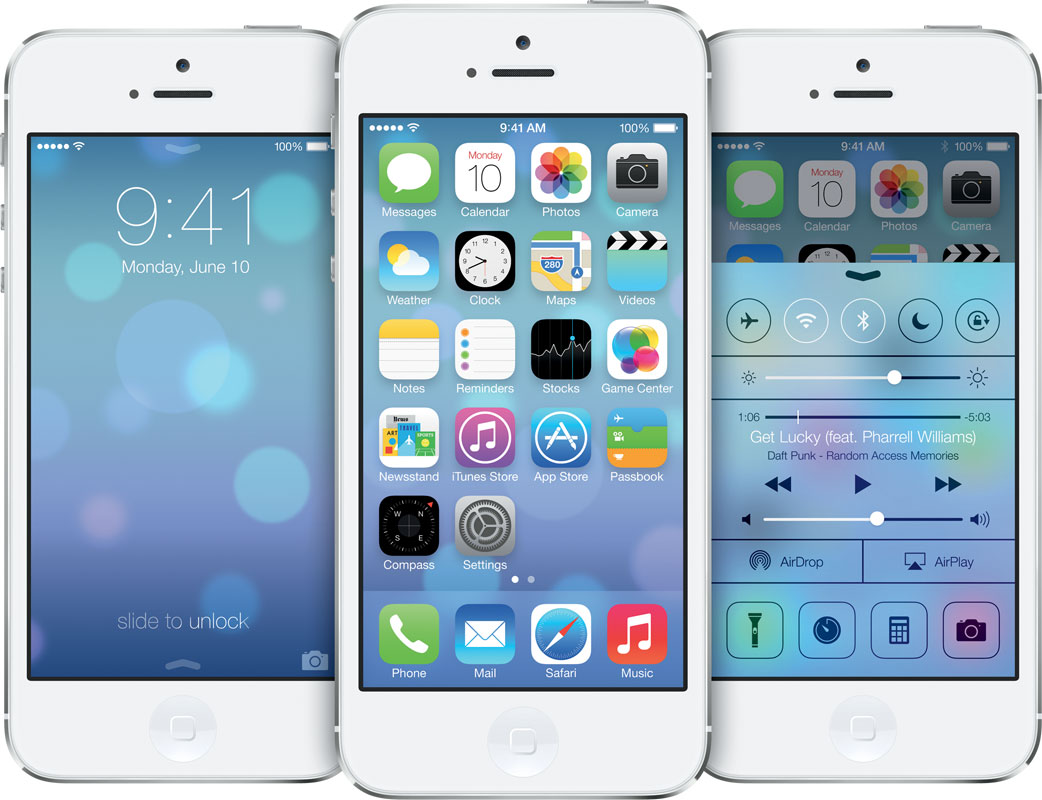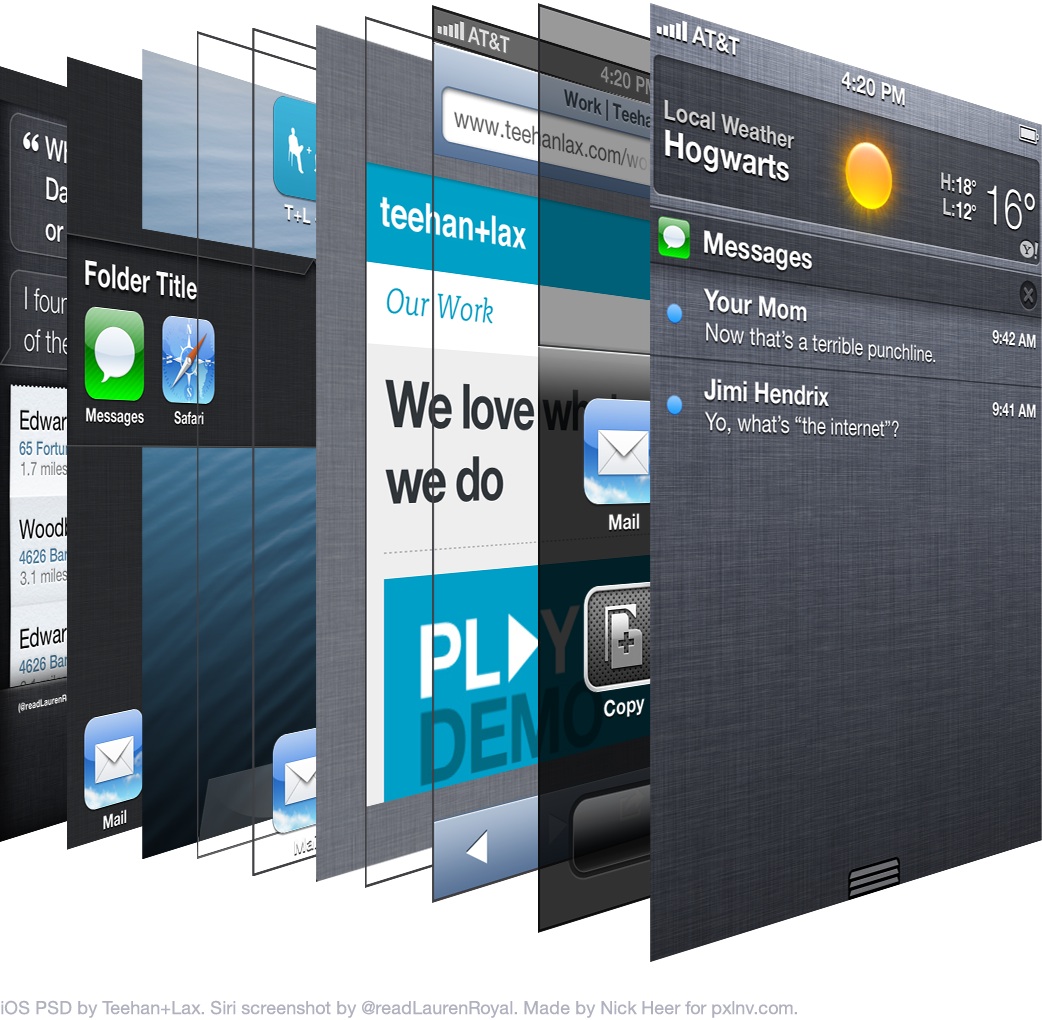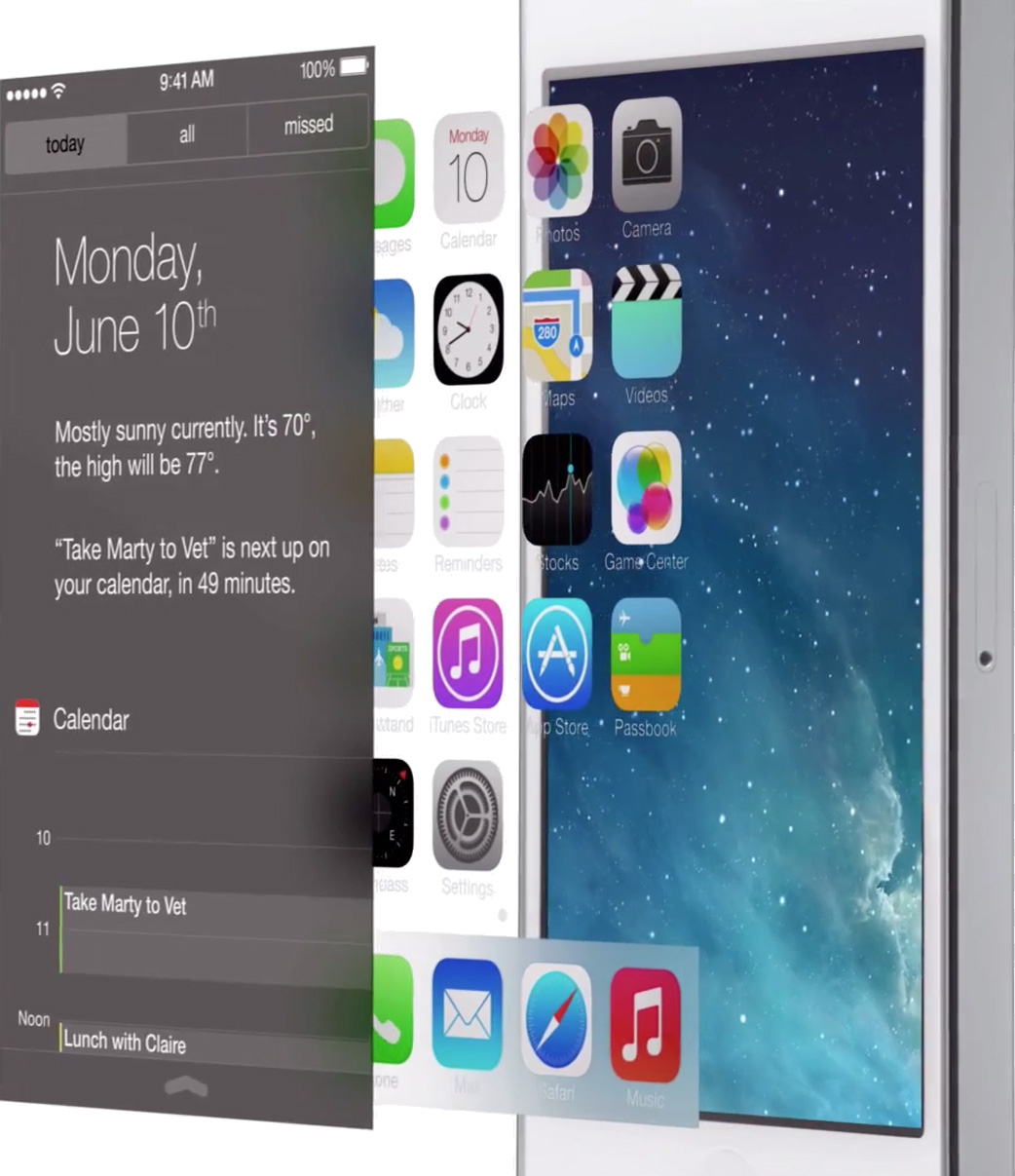Apple’s biggest days are bigger than anyone else’s biggest days, or so it would seem. There was a noticeable fanfare, panache, and rapid-fire pace underneath their two-hour marathon of an opening keynote at WWDC 2013. But, contrary to several previous WWDCs, it didn’t begin with a comedic sketch — in 2012, it was Siri doing standup comedy, and in previous years, it opened with a special ad in the Mac & PC lineage.
This year, it was different. The keynote kicked off with a brief kinetic typographic representation of a mantra. It was an explaination of the underlying principles of the famous “designed by Apple in California” wordmark, but it set the stage for an event with every presenter firing on all cylinders. It was a simple way for Apple to try to explain their philosophy to the stock traders and tech journalists who demand constant iteration, change, and variety.
Tim Cook started off, as you’d expect, by reading out the numbers. These figures betray the vast scale at which Apple operates, and every year the numbers are harder to grasp. Nearly a million applications on the App Store, paying a combined $10 billion to developers from 575 million accounts with credit cards. Massive.
Then, something strange. It has become traditional for Apple to give time to individual developers during the very public WWDC keynote. This year, they kicked off with a brand new company which launched effectively during the keynote and with Tim Cook’s endorsement. Bizarre.
Then to the meat; OS X “Mavericks”. They’ve finally run out of cats, and are instead naming their OS releases after places around California.1 Of note, Apple seems to refer to Mavericks almost nowhere as 10.9, or a derivative thereof. It is entirely versionless, aside from in the fine print. The upgrade is modest, at least on the surface. Some iOS features have, perhaps inevitably, made their way into OS X, including the iBooks and Maps applications. And, yes, Apple has ditched the leather in Calendar. There’s some great stuff under the hood, too. The system apparently better organizes how it uses CPU time and memory to optimize for battery life. Clever.
But all of these features are simply ways of representing the mantra with which they opened the keynote. Everything is about design, and therefore about functionality. Apple ditched the leather in Calendar partly because it’s aesthetically challenged, but because of a broader reason than that: it isn’t helpful to the end user. This philosophy has long beeen a part of Apple’s design process, but it has ascended to new importance with Jony Ive’s rising role at the company.
This philosophy is also obvious in the update everyone was waiting and watching for. Apple claims that iOS 7 is the “most significant iOS update since the original iPhone”, and it’s hard to disagree. Every application has been changed and modified to suit this newly-focused Apple aesthetic of simplicity and lightness. Per Jony Ive in the introduction video:
True simplicity is derived from so much more than just the absence of clutter and ornamentation. It’s about bringing order to complexity.
Ive explains that the interface design team created a structure and mathematical methodology to the interface. A new grid structure was created for everything from the icons to the typography which should, in Ive’s words, make individual elements more “harmonious”.

The updated iconography is one of the updates which I feel is less successful in some ways than the outgoing interpretation. The grid system has produced icons which, oddly enough, look imbalanced near each other. The edges are more rounded with larger glyphs, making some of the icons feel more cluttered, like a cluster of balloons. Some interpretations, such as the Photos, Music, and Weather, are very successful and downright beautiful. Others feel less so, such as Safari, Newsstand, and both of the stores. Mail, for example, looks a little like someone at Apple discovered the web 2.0 Photoshop gradient pack. But focusing on just the icons to determine whether Apple is still the king of visual design is a bit like looking only at one dish on a restaurant’s menu to see if they’re reputable.
The rest of the system shows significant improvements. Traditional ways of showing visual depth have been eschewed in favour of background blurring on overlays. Panels and toolbars now look like a smear of Vaseline across the device — a truly clever way of showing context clearly to the user. Throughout the OS, the interface effectively disappears to elevate any given application’s content to the forefront. The combination of blurred backgrounds with simpler icons removes the nonessentials of the interface, but don’t make the mistake of thinking this is easier for Apple to design. It’s minimalist and is, to my eyes, superior on aesthetic and functional levels.
WWDC wasn’t just about software releases, or hardware releases and previews for that matter. It was an opportunity for Apple to remind us of the vision they have as a company, and how they differ from their competitors. To emphasize the latter, Schiller and Federighi took turns zinging their rivals.2 The overarching narrative was clear: Apple’s not slowing down. They’re at the top of their game, and they aim to stay there.


